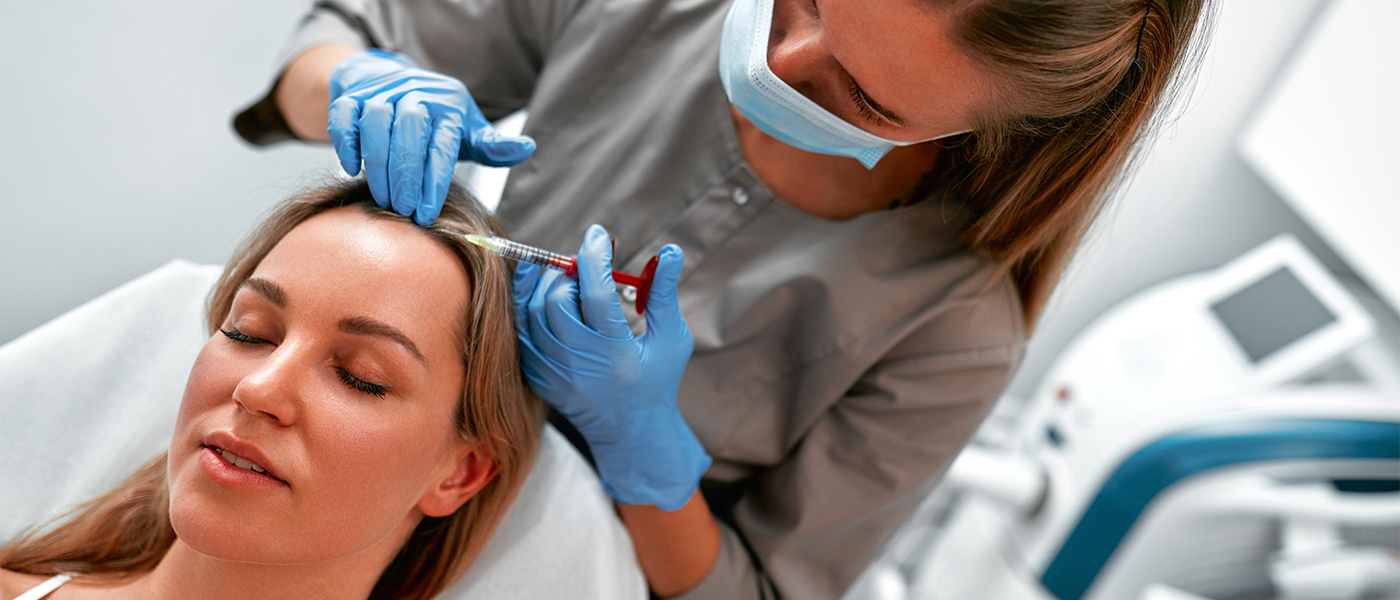
PRP (Platelet-Rich Plasma) therapy is a medical treatment that utilizes the healing properties of platelets in the patient's blood.
Platelets play a role in blood clotting but also contain growth factors and other proteins that help in tissue repair and regeneration. In PRP treatment, a small amount of blood is taken from the patient and processed to concentrate platelets. This condensed plasma is injected into the affected area, promoting healing and reducing pain associated with various conditions.
PRP treatment is often used in orthopedics and sports medicine. It can be very effective in the treatment of musculoskeletal injuries such as tendonitis, ligament injuries, and osteoarthritis. With PRP, successful results are obtained in accelerating the healing process and increasing the function of damaged tissues.
In addition to orthopedic applications, PRP therapy is also used in dermatology for skin rejuvenation, hair loss treatments, and wound healing. Due to the versatility of PRP treatment and its strengthening of the body's natural healing mechanisms, it is a preferred method for both athletes recovering from sports injuries and individuals seeking non-surgical solutions for chronic pain and aesthetic concerns.
PRP treatment, which can be used for different purposes, has important advantages. These advantages are listed below:
PRP treatment is applied by stimulating and accelerating the healing process in treating various medical conditions. By injecting concentrated platelets directly into the affected area, PRP therapy promotes tissue repair, reduces inflammation, and increases cellular regeneration. This approach is particularly effective in treating conditions where conventional therapies have had limited success and patients prefer minimally invasive options.
The treatment is administered in a clinical setting following careful preparation of the PRP concentrate. After a small amount of blood is drawn from the patient, this blood is centrifuged to separate the platelets and plasma from the other blood components. Once concentrated, the PRP is injected into specific areas of concern under local anesthesia. The whole procedure is quite quick and patients usually feel minimal discomfort.
PRP therapy is used in a wide range of medical fields such as orthopedics, dermatology, and even dentistry. In orthopedics, it is used to treat conditions such as chronic tendon injuries (eg tennis elbow, Achilles tendonitis) and joint osteoarthritis. Dermatologists use PRP to improve skin texture, treat acne scars, and stimulate hair growth in hair loss conditions such as alopecia. PRP is also used in dentistry to improve bone regeneration and promote faster healing after some dental procedures.
The number of sessions of PRP treatment depends on which treatment it is used for. For example, when used for chronic tendonitis, the treatment usually takes an average of 3 sessions. In the case of a muscle injury, the treatment can be completed in 1-2 sessions. The age of the person is also one of the factors that determine how long PRP treatment will last. With age, the number of stem cells in the human body begins to decrease. Therefore, PRP treatments may take a little longer in older people.
PRP sessions are approximately 2 weeks apart. It is planned to last between 2-8 sessions depending on the scope of the case and the needs of the person. PRP treatment can be applied together with mesotherapy for people with hair loss or who want to rejuvenate their skin. After the PRP treatment is finished, injections can be repeated several times a year. You can contact EMPCLINICS for detailed information about PRP.
No, it is not. PRP therapy and stem cell therapy are not the same thing. PRP treatment aims to increase the number of platelets. The fibrinous formed after the application also collects the existing stem cells. In other words, they indirectly work together with stem cells.
The effects of PRP treatment may not be seen immediately. This is because the human skin or the applied tissues need a certain amount of time to regenerate themselves. Therefore, the effects usually start to appear gradually after the 3rd session.
After PRP treatment, it is recommended not to contact the area with hot water, especially on the same day. You should also be careful against sun rays.